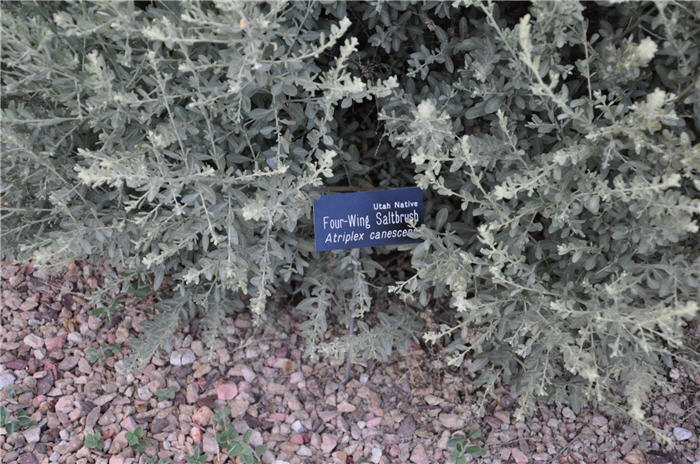| Botanical Name: Atriplex canescens | |
| Common Name: Fourwing Saltbush |

-
Anatomy
-
Culture
-
Design
Plant Type
Broadleaf Evergreen, Shrub
Height Range
3-6'
Flower Color
Green, Yellow
Flower Season
Spring, Summer
Leaf Color
Grey Green, Grey, Silver
Bark Color
Brown, Grey
Fruit Color
Brown, Green
Fruit Season
Summer, Fall
Sun
Full
Water
Very Low, Low
Growth Rate
Moderate
Soil Type
Sandy, Clay, Loam, Rocky, Unparticular
Soil Condition
Average, Poor, Well-drained, Dry
Soil pH
Neutral, Basic
Adverse Factors
Allergenic, Invasive
Design Styles
Meadow, Ranch, Spanish
Accenting Features
Unusual Foliage
Seasonal Interest
Winter, Spring, Summer, Fall
Location Uses
Background, Shrub Border, Foundation, With Rocks
Special Uses
Erosion Control, Hedge, Mass Planting, Naturalizing
Attracts Wildlife
Birds, Wildlife
Information by: Stephanie Duer
Photographer: Mountain States Nursery
Photographer: Mountain States Nursery
-
Description
-
Notes
Fourwing Saltbush, a tough Utah native, is a 4 to 6 foot tall and wide evergreen shrub with a rounded, though a bit irregular, habit. Its leaves are narrowly oblong, spoon-shaped, and whitish to silvery grey. The flowers are inconspicuous, but are followed by interesting, four-winged tan bracts that are persistent, and incidentally, are great in dried arrangements. Bark is greyish brown and exfoliating. There is a great deal of variability between plants, and so its best use is probably in a naturally styled landscape, and as winter forage in a wildlife landscape.
A very adaptable plant, tolerating a wide variety of conditions, except not tolerant of wet soils or shade. Grow in full sun, even southern or western exposures, in nearly any well-draining soil. Tolerates soil pH up to 8.5. It is very drought tolerant, requiring no supplemental watering after establishment. Cut back hard every few years in late winter to early spring to keep a tidy form.